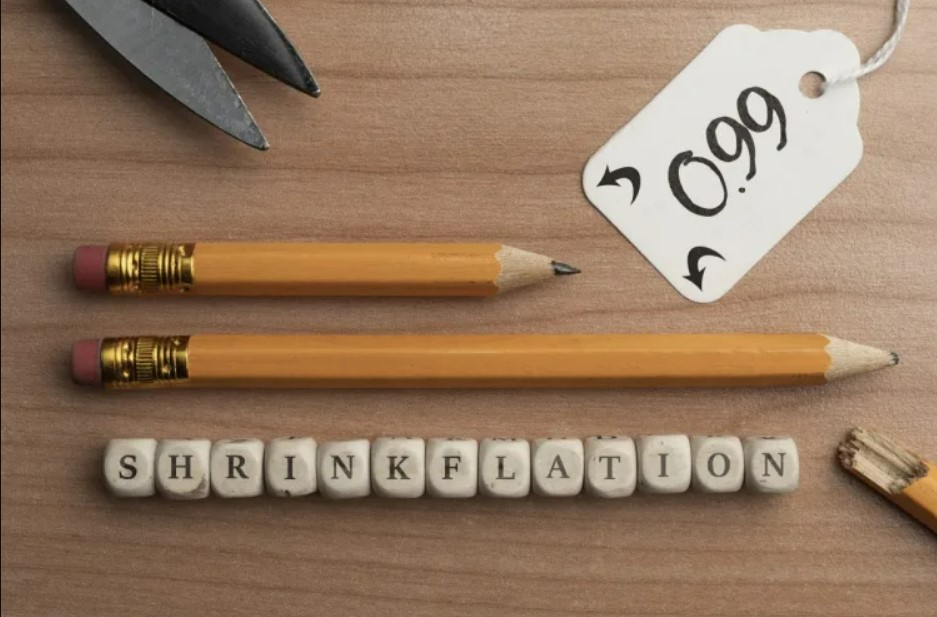The domino effect of COVID-19 and the war in Ukraine has disrupted supply chains and increased costs, leaving manufacturers with three paths to survive: increase prices directly, reformulate the product with cheaper materials or downsize products in waves.
Copyright: venturebeat.com – “How AI can help companies beat inflation and avoid shrinkflation”
 As customers are more sensitive to increases in price or reductions in quality, many companies opted to take out some of the products without changing the price. Manufacturers refer to this practice as “cost reduction.” But consumers call it shrinkflation.
As customers are more sensitive to increases in price or reductions in quality, many companies opted to take out some of the products without changing the price. Manufacturers refer to this practice as “cost reduction.” But consumers call it shrinkflation.
The shrinkflation backlash
Shrinkflation isn’t new, and for a long while it was considered a standard, if not necessarily ethical, way of doing business, especially during recessions. It was done incrementally – in bits and pieces – which is why it rarely came under the consumer’s radar. But, for the last two years, a time when consumers’ financial concerns are at an all-time high, shrinkflation is not going unnoticed.
According to a recent consumer survey by Gartner, “In the past year, 70% of consumers say they’ve noticed shrinkflation or skimpflation [the practice of using cheaper materials in a product] in at least one product category. 41% of consumers noted that household products suffered from shrinkflation, while 32% of consumers noted that ‘personal care’ products suffered from it.”
Here are a few recent examples of shrinkflation:
- Nestle was recently chastised for reducing its Cadbury Dairy Milk sharing bar from 200 g to 180 g.
- Bags of Party Size Frito Scoops were reduced from 18 to 15.5 ounces this year.
- PepsiCo is phasing out its 32-ounce Gatorade bottles in favor of 28-ounce containers.
In addition to customers reacting strongly to shrinkflation, manufacturers themselves are understanding the ineffectiveness of this practice. “It’s a short-term tactic for a long-term problem. Shrinkflation doesn’t drastically impact transportation routes, packaging or other fixed overhead costs, it only helps with the quantities of raw materials, which means it doesn’t have the restorative impact on margins that companies are often hoping for,” said Ira Dubinsky, GTM director at Peak, a decision intelligence company.[…]
Thank you for reading this post, don't forget to subscribe to our AI NAVIGATOR!
Read more: www.venturebeat.com


The domino effect of COVID-19 and the war in Ukraine has disrupted supply chains and increased costs, leaving manufacturers with three paths to survive: increase prices directly, reformulate the product with cheaper materials or downsize products in waves.
Copyright: venturebeat.com – “How AI can help companies beat inflation and avoid shrinkflation”
The shrinkflation backlash
Shrinkflation isn’t new, and for a long while it was considered a standard, if not necessarily ethical, way of doing business, especially during recessions. It was done incrementally – in bits and pieces – which is why it rarely came under the consumer’s radar. But, for the last two years, a time when consumers’ financial concerns are at an all-time high, shrinkflation is not going unnoticed.
According to a recent consumer survey by Gartner, “In the past year, 70% of consumers say they’ve noticed shrinkflation or skimpflation [the practice of using cheaper materials in a product] in at least one product category. 41% of consumers noted that household products suffered from shrinkflation, while 32% of consumers noted that ‘personal care’ products suffered from it.”
Here are a few recent examples of shrinkflation:
In addition to customers reacting strongly to shrinkflation, manufacturers themselves are understanding the ineffectiveness of this practice. “It’s a short-term tactic for a long-term problem. Shrinkflation doesn’t drastically impact transportation routes, packaging or other fixed overhead costs, it only helps with the quantities of raw materials, which means it doesn’t have the restorative impact on margins that companies are often hoping for,” said Ira Dubinsky, GTM director at Peak, a decision intelligence company.[…]
Thank you for reading this post, don't forget to subscribe to our AI NAVIGATOR!
Read more: www.venturebeat.com
Share this: